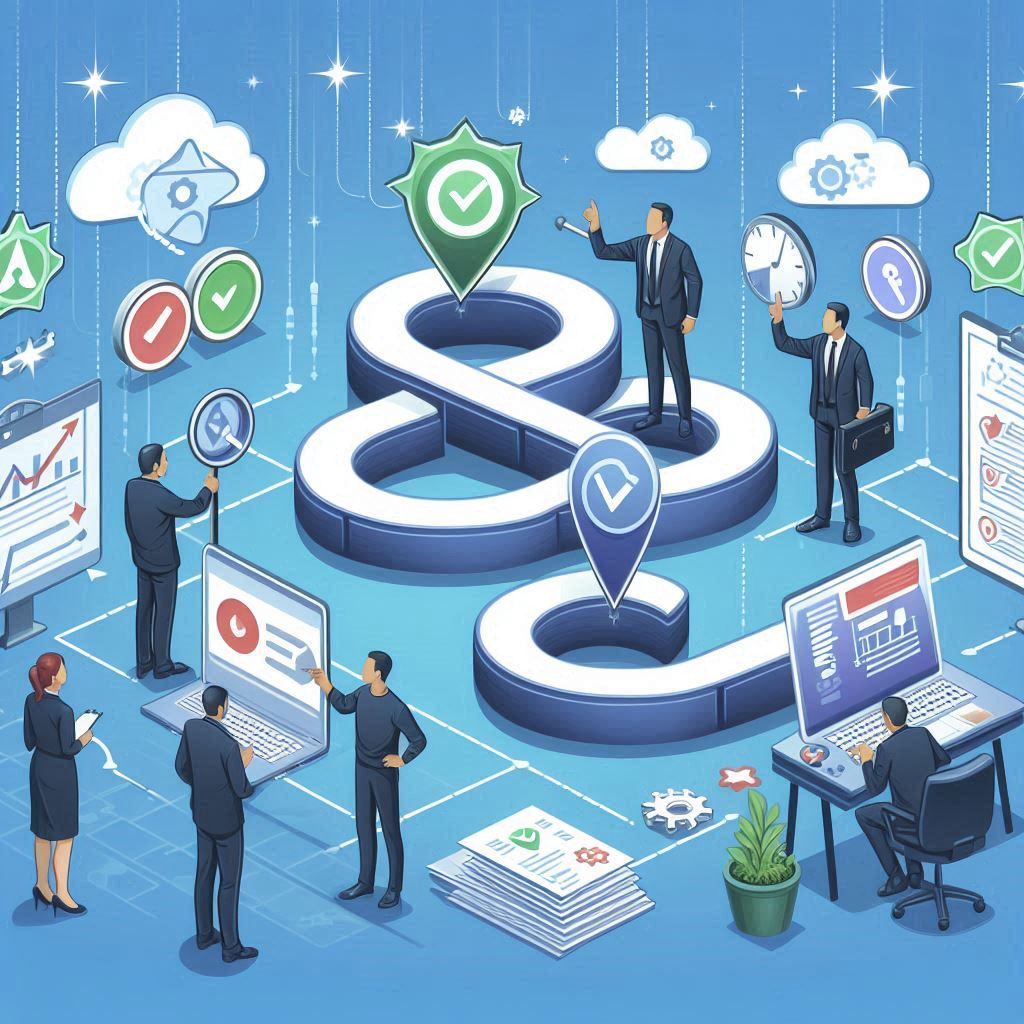The Importance of Customer Input in Software Design In today’s competitive digital landscape, businesses are increasingly recognizing the need to create software that not only meets their functional objectives but also addresses the real needs of their users. One of the most effective ways to achieve this is by incorporating customer input into the software design process. Customer input ensures that the final product is user-friendly, relevant, and effective, leading to higher satisfaction, increased engagement, and better market performance. In this blog, we’ll explore the critical importance of customer input in software design and how it can positively impact the entire development lifecycle. 1. Understanding User Needs At the core of any successful software is a deep understanding of what the users need. While internal teams might have a strong vision for the software, the end users are the ones who will interact with it daily. Customer input helps in identifying specific pain points, preferences, and functionalities that might otherwise be overlooked. Identifying Problems: Customers can provide insights into challenges they face with existing systems, allowing the design team to develop solutions that directly address these issues. Feature Relevance: Understanding which features are most important to users ensures that the development team focuses on what matters, rather than wasting time on unnecessary or irrelevant functionalities. User Personas: Engaging with customers helps designers create accurate user personas that guide the development process. These personas represent the typical users, their needs, and their behavior patterns. Example: Slack’s early development involved significant customer feedback, allowing the team to focus on real-time collaboration features that users found most valuable. 2. Enhancing Usability and User Experience (UX) User experience is one of the most critical factors in software success. No matter how technically advanced or feature-rich a piece of software is, if users find it difficult to navigate or use, it will fail to engage them. User Testing: Gathering feedback from customers through usability testing allows designers to identify problem areas in the interface, whether it’s complicated navigation, confusing layouts, or missing features. These insights can then be used to improve the UX before the software is fully launched. Iterative Improvements: By regularly involving customers in the design process, developers can iterate on the software, gradually refining and optimizing the experience based on real user interactions. Empathy in Design: Customer input fosters a deeper connection between the design team and the end users, ensuring that decisions are made with empathy toward the users’ needs and challenges. Example: Airbnb continually gathers feedback from hosts and guests to improve its platform’s usability, ensuring the booking process remains seamless and user-friendly. 3. Reducing Development Costs and Time Incorporating customer input early and throughout the software design process can help reduce costly mistakes and unnecessary development. When developers work without feedback, there’s a greater risk of creating features that users don’t need or want, leading to wasted resources. Avoiding Rework: Customer feedback helps identify problems early in the design phase, preventing costly rework after the software has already been built. It’s easier and cheaper to fix design issues in the wireframe stage than in the coding stage. Prioritizing Development: With clear customer input, teams can prioritize which features to develop first, focusing on high-value additions that will benefit users the most. Faster Time to Market: Software development that aligns closely with customer needs from the beginning can streamline the process, reducing the time needed to test, revise, and roll out features. Example: Dropbox used early customer feedback to focus on its file-sharing and storage functionalities, which helped them launch quickly with a product that met users’ core needs. 4. Driving Customer Loyalty and Engagement When customers feel like their opinions are valued and that they play an active role in shaping the product they use, they are more likely to stay engaged and loyal to the brand. Customer involvement in software design creates a sense of ownership, as they see their feedback and suggestions reflected in the final product. User-Centric Development: Building software with direct input from users ensures that the product continues to evolve based on their needs, driving sustained engagement. Community Building: Engaging customers in the design process also helps build a community around the software. This community can become a valuable source of feedback, product advocates, and even brand ambassadors. Higher Satisfaction: By delivering a product that closely aligns with what users want, businesses can increase customer satisfaction, leading to long-term loyalty and reduced churn. Example: Microsoft’s Windows Insider Program allows users to test new features and provide feedback, ensuring that updates meet customer expectations and improve user experience. 5. Ensuring Product-Market Fit No matter how innovative or groundbreaking a software product may seem, if it doesn’t solve real problems for its users, it won’t achieve success in the market. Customer input ensures that the software remains relevant and meets market demands. Validating Ideas: By involving customers in the design phase, businesses can validate whether their product ideas are aligned with what the market needs. This helps avoid the pitfall of developing software based on assumptions that don’t hold true in the real world. Adapting to Trends: Customers are often on the front lines of industry changes, and their feedback can help developers stay ahead of emerging trends and shifts in user preferences. Improving Marketability: Software that is designed based on customer input is easier to market because it directly addresses the needs and pain points of the target audience. Example: Spotify continually refines its algorithms and features based on user feedback, ensuring it stays relevant and popular in the highly competitive music streaming market. 6. Building Trust and Transparency Incorporating customer input into the software design process also builds trust between the business and its customers. When users see that their feedback is taken seriously and implemented, it fosters a positive relationship with the brand. Transparency in Development: Sharing development progress with customers and allowing them to provide feedback at different stages of the design process shows transparency and a commitment to delivering value.
How to Leverage Technology for Enhanced User Engagement
How to Leverage Technology for Enhanced User Engagement In an increasingly digital world, engaging users effectively has become crucial for businesses aiming to retain their customers and foster long-term loyalty. Technology offers countless tools and techniques to improve user engagement, making it easier to deliver personalized, interactive, and dynamic experiences. In this blog, we’ll explore the ways businesses can leverage technology to enhance user engagement, drive conversions, and build lasting relationships. 1. Personalization with AI and Machine Learning Artificial intelligence (AI) and machine learning (ML) have revolutionized user engagement by allowing businesses to deliver highly personalized experiences. By analyzing user data, AI can create tailored content, product recommendations, and marketing messages that resonate with individual users. Dynamic Content: AI tools can adjust website content in real-time based on user preferences, browsing history, and behavior, providing a more relevant experience. Predictive Analytics: Machine learning algorithms can predict user preferences and future behavior, allowing businesses to proactively offer recommendations or services that align with their interests. Personalized Email Campaigns: AI-powered email platforms can create personalized campaigns based on users’ purchase history, preferences, and past interactions. Example: Netflix uses AI to analyze viewers’ watching habits, recommending shows and movies tailored to their preferences, thus increasing engagement and retention. 2. Interactive User Interfaces An engaging user interface (UI) can significantly enhance user interaction and encourage them to spend more time on your platform. Utilizing modern technologies to create interactive elements can make your app or website more appealing. Animations and Microinteractions: Adding subtle animations or microinteractions (e.g., buttons that react when clicked) can make the user experience more enjoyable and engaging. Augmented Reality (AR): AR technologies allow users to engage with products or services in an interactive and immersive way. Retail apps, for example, can enable users to virtually try on clothes or see how furniture looks in their space. Gamification: Introducing game-like elements such as achievements, points, or leaderboards into the user experience can make interactions more fun and rewarding, driving engagement. Example: Snapchat’s use of AR filters allows users to engage with the app in a playful and interactive manner, encouraging frequent usage. 3. Real-Time Communication Channels Real-time communication tools such as chatbots, live chats, and social media integration can greatly enhance user engagement by providing immediate support and information. Chatbots: AI-powered chatbots offer instant customer support, answer user queries, and assist in guiding users through various processes, making interactions smoother and more efficient. Live Chat: Enabling live chat functionality on your website allows users to interact with a real person in real-time, offering them a personalized experience and increasing satisfaction. Social Media Integration: Integrating social media channels with your platform allows users to engage with your brand across multiple touchpoints and fosters a sense of community. Example: Many e-commerce platforms use chatbots to help users find products, answer questions, and provide personalized recommendations, improving the shopping experience. 4. Push Notifications and Alerts Push notifications are a powerful tool for engaging users and keeping them informed about updates, offers, and personalized content. When used effectively, they can help re-engage dormant users and keep active users engaged. Targeted Notifications: Use behavioral data to send targeted notifications, such as reminders about items left in a cart, personalized promotions, or updates relevant to user interests. Timing and Frequency: Ensure that notifications are sent at appropriate times and don’t overwhelm users. Excessive notifications can lead to annoyance and app uninstalls. Interactive Notifications: Some notifications allow users to take action directly from the notification itself (e.g., replying to a message or confirming an appointment), increasing engagement. Example: E-commerce apps like Amazon send personalized notifications about price drops on items users have viewed or added to their wishlists. 5. Mobile Optimization and Apps With the growing number of mobile users, optimizing your platform for mobile use and developing mobile apps can significantly enhance user engagement. A seamless mobile experience ensures that users can interact with your brand from anywhere, at any time. Responsive Design: Ensure that your website is fully responsive, providing a smooth and intuitive user experience on any mobile device. Mobile Apps: Creating a mobile app provides users with direct access to your services and offers additional engagement tools like app-exclusive offers, in-app messaging, and loyalty programs. Mobile Payment Integration: Offering easy mobile payment options such as Apple Pay, Google Pay, or in-app payments can enhance the convenience of your platform, encouraging more frequent use. Example: Starbucks has a highly engaging mobile app that allows users to order ahead, earn rewards, and make payments, enhancing the overall customer experience. 6. Data-Driven Insights for Personalization User data is one of the most valuable resources for businesses when it comes to engagement. Leveraging user data enables you to understand your audience better and create more personalized experiences. Behavior Tracking: Analyzing how users interact with your website or app (e.g., time spent on pages, frequently visited sections) helps identify areas for improvement and customization. A/B Testing: Conduct experiments with different UI elements, messaging, and features to see which versions engage users better, then optimize accordingly. User Segmentation: Divide your user base into segments based on behavior, demographics, and preferences to create more targeted and effective engagement strategies. Example: Spotify analyzes user data to create personalized playlists like “Discover Weekly,” keeping users engaged with new music tailored to their tastes. 7. Content Personalization and User-Generated Content Content remains a crucial aspect of user engagement, and personalizing it can significantly boost interaction. Additionally, encouraging users to create their own content fosters community and engagement. Dynamic Content: Implement personalized content recommendations, such as blog posts, videos, or articles, based on user preferences and past interactions. User-Generated Content (UGC): Encourage users to contribute content, such as reviews, photos, or social media posts. UGC helps build a sense of community and keeps users engaged. Video Content: Short-form videos, live streaming, and tutorials can capture user attention and improve engagement, especially when the content is interactive. Example: Instagram leverages UGC by encouraging users to post and share content, increasing engagement through likes, comments, and
Understanding the Benefits of Collaborative Software Development
Understanding the Benefits of Collaborative Software Development In today’s fast-paced digital landscape, the success of software development projects hinges on collaboration. Collaborative software development involves teams working together to design, build, and maintain software applications. This approach leverages diverse skills and perspectives, leading to better outcomes and more innovative solutions. In this blog, we will explore the key benefits of collaborative software development and how it can enhance productivity, creativity, and overall project success. 1. Enhanced Communication Effective communication is the cornerstone of any successful project. Collaborative software development fosters open lines of communication among team members, ensuring that everyone is on the same page. Here are a few ways it enhances communication: Real-Time Updates: Team members can share updates, feedback, and changes instantly, reducing the risk of misunderstandings. Diverse Perspectives: Involving individuals from different backgrounds encourages a variety of viewpoints, which can lead to more comprehensive solutions. Improved Problem-Solving: Collaborative discussions often lead to innovative problem-solving approaches, as team members can brainstorm and refine ideas together. 2. Increased Productivity When teams collaborate effectively, productivity tends to rise. Here’s how collaboration can enhance productivity in software development: Task Distribution: By dividing tasks according to team members’ strengths, projects can progress more quickly and efficiently. Reduced Redundancies: Collaboration helps identify overlaps in work, allowing teams to streamline efforts and minimize wasted time. Faster Decision-Making: With collective input, teams can reach decisions more quickly, enabling faster progress on projects. 3. Higher Quality Code Collaborative software development contributes to producing higher quality code through several mechanisms: Code Reviews: Peer reviews allow team members to provide constructive feedback, leading to improved code quality and reduced errors. Shared Knowledge: Collaborative environments foster knowledge sharing, helping team members learn from each other and adopt best practices. Continuous Testing: Teams can implement continuous integration and continuous testing (CI/CD) practices, allowing for regular quality checks and quick identification of issues. 4. Enhanced Innovation Collaboration breeds innovation. When team members work together, they can brainstorm ideas and challenge each other’s thinking, leading to creative solutions. Here are some ways collaboration fosters innovation: Diverse Skill Sets: Teams composed of individuals with various expertise can tackle complex challenges and innovate more effectively. Collective Brainstorming: Collaborative sessions encourage idea generation, leading to the exploration of multiple solutions and the identification of the best options. Cross-Functional Collaboration: Involving members from different departments (e.g., developers, designers, and product managers) allows for a holistic approach to problem-solving. 5. Increased Accountability Collaboration promotes a sense of accountability among team members, which can positively impact project outcomes: Shared Responsibility: Team members feel a sense of ownership over the project, knowing that their contributions affect the overall success. Mutual Support: Collaboration encourages team members to support each other, leading to a more committed and engaged workforce. Feedback Mechanisms: Regular check-ins and feedback loops enhance accountability, as team members can track progress and make adjustments as needed. 6. Flexibility and Adaptability The dynamic nature of software development often requires teams to adapt quickly to changing requirements. Collaborative software development enables this adaptability through: Agile Practices: Collaboration is a fundamental principle of agile methodologies, allowing teams to pivot quickly in response to new information or changing priorities. Frequent Iterations: Teams can work in short cycles, iterating on features based on feedback and adjusting their approach as needed. Responsive Communication: Open communication channels facilitate quick discussions, allowing teams to address issues promptly and adjust workflows accordingly. 7. Stronger Team Dynamics Collaboration fosters a sense of camaraderie among team members, which can lead to stronger team dynamics: Relationship Building: Working closely with others helps build trust and rapport, essential for a cohesive team environment. Conflict Resolution: Collaborative teams often have established processes for addressing conflicts, leading to healthier team interactions. Increased Morale: A positive collaborative environment can boost team morale, resulting in higher job satisfaction and lower turnover rates. 8. Better Risk Management Collaborative software development can lead to improved risk management by: Collective Risk Assessment: Teams can assess potential risks together, drawing on diverse perspectives to identify and address issues early. Proactive Problem Solving: Collaborative teams are better equipped to tackle challenges proactively, rather than reactively, leading to more effective risk mitigation strategies. Shared Knowledge: Teams can pool their knowledge and experience to anticipate potential pitfalls, reducing the likelihood of costly mistakes. 9. Conclusion Collaborative software development offers numerous benefits that can significantly enhance project outcomes. From improved communication and productivity to higher quality code and increased innovation, the advantages of collaboration are clear. By fostering a collaborative environment, organizations can create a culture that values teamwork and creativity, ultimately leading to successful software projects. Embracing collaboration not only benefits individual teams but also contributes to the overall growth and success of the organization in today’s competitive landscape.
How to Create Effective Software Development Workflows
How to Create Effective Software Development Workflows Creating effective software development workflows is crucial for ensuring that projects run smoothly, deadlines are met, and quality is maintained. A well-defined workflow can help streamline communication, enhance collaboration, and improve productivity within development teams. In this blog, we’ll explore the essential steps to create effective software development workflows, the tools you can use, and best practices to consider. 1. Understand the Importance of Workflows Before diving into the steps to create workflows, it’s essential to understand why they matter: Clarity: Workflows provide clear guidelines for team members, reducing ambiguity about roles and responsibilities. Efficiency: A structured workflow minimizes bottlenecks and redundancies, leading to faster project completion. Quality Control: Workflows help maintain quality by incorporating checks and balances at different stages of development. Communication: Clear workflows enhance communication among team members, ensuring everyone is on the same page. 2. Define the Stages of Your Workflow The first step in creating an effective software development workflow is to define the key stages involved in the process. A typical workflow may include the following stages: 2.1. Planning Requirements Gathering: Collect and document the functional and non-functional requirements of the project. Project Scope: Define the project scope, including timelines, milestones, and deliverables. Resource Allocation: Assign team members and resources to specific tasks based on skills and availability. 2.2. Design Architecture Design: Outline the software architecture, including technology stack and system components. User Interface Design: Create wireframes or mockups to visualize the user interface and experience. 2.3. Development Coding: Implement the planned features and functionality through coding. Version Control: Use version control systems like Git to manage code changes and facilitate collaboration. 2.4. Testing Quality Assurance: Conduct various tests (unit, integration, user acceptance) to identify and fix issues. Bug Tracking: Use bug tracking tools to document and manage identified issues. 2.5. Deployment Release Management: Prepare the software for deployment, including documentation and training. Production Deployment: Deploy the software to the production environment. 2.6. Maintenance Support and Updates: Provide ongoing support, address user feedback, and implement necessary updates. 3. Choose the Right Tools Selecting the right tools is essential for streamlining your workflow. Here are some categories of tools to consider: 3.1. Project Management Tools Trello: A visual project management tool that allows you to create boards, lists, and cards to organize tasks. Jira: A robust tool for managing agile projects, offering features for issue tracking, sprint planning, and reporting. 3.2. Version Control Systems Git: A distributed version control system that allows teams to collaborate on code efficiently. GitHub or GitLab: Platforms that provide hosting for Git repositories, along with collaboration features. 3.3. Continuous Integration/Continuous Deployment (CI/CD) Tools Jenkins: An open-source automation server that helps with building, testing, and deploying applications. CircleCI: A CI/CD platform that automates the software development process. 3.4. Testing Tools Selenium: A popular tool for automating web application testing. Jest: A JavaScript testing framework that enables developers to test code quickly and efficiently. 3.5. Documentation Tools Confluence: A collaboration tool for creating and managing documentation. Notion: A flexible workspace that combines notes, tasks, and databases for documentation. 4. Establish Communication Channels Effective communication is vital for a successful workflow. Consider the following strategies: 4.1. Regular Stand-Ups Conduct daily or weekly stand-up meetings to discuss progress, challenges, and upcoming tasks. This fosters accountability and transparency within the team. 4.2. Collaboration Platforms Utilize collaboration tools such as Slack, Microsoft Teams, or Discord to facilitate real-time communication and file sharing. 4.3. Documentation Ensure that all processes, decisions, and changes are documented. This helps maintain a shared knowledge base and assists onboarding new team members. 5. Implement Agile Methodologies Agile methodologies, such as Scrum or Kanban, can significantly enhance your software development workflows. Here’s how: 5.1. Scrum Sprints: Divide work into time-boxed iterations (sprints) to focus on delivering specific features. Roles: Clearly define roles such as Product Owner, Scrum Master, and Development Team to ensure accountability. 5.2. Kanban Visual Workflow: Use a Kanban board to visualize the workflow and manage tasks based on their status (e.g., To Do, In Progress, Done). Continuous Delivery: Focus on continuous delivery by allowing team members to pull tasks based on capacity. 6. Monitor and Optimize the Workflow Regularly review and optimize your workflows to ensure they remain effective: 6.1. Performance Metrics Define key performance indicators (KPIs) to measure the success of your workflow. Metrics can include: Lead Time: The time taken from the start of development to deployment. Cycle Time: The time taken to complete a specific task or feature. Bug Rate: The number of bugs reported after deployment. 6.2. Gather Feedback Collect feedback from team members about the workflow process. Identify areas for improvement and implement changes accordingly. 6.3. Continuous Improvement Adopt a mindset of continuous improvement, regularly assessing and refining your workflows to adapt to changing needs and technologies. 7. Conclusion Creating effective software development workflows is essential for enhancing productivity, collaboration, and quality. By defining clear stages, choosing the right tools, establishing communication channels, implementing agile methodologies, and continuously optimizing the process, organizations can streamline their software development efforts. Ultimately, well-structured workflows lead to improved project outcomes and a more satisfied team, fostering an environment where innovation can thrive.
The Role of Personalization in Enhancing Software Experience
The Role of Personalization in Enhancing Software Experience In today’s fast-paced digital world, users have come to expect experiences tailored to their individual preferences and needs. Personalization in software development is no longer a luxury but a necessity for organizations seeking to enhance user experience, drive engagement, and build long-lasting relationships with their customers. This blog explores the role of personalization in enhancing software experiences, its benefits, and how to implement effective personalization strategies. 1. Understanding Personalization in Software Personalization refers to the process of customizing software experiences based on user data, behaviors, and preferences. It involves creating a unique interaction for each user, which can range from customized interfaces to tailored content and recommendations. Personalization can occur at various levels, including: Content Personalization: Displaying relevant content based on user interests or behavior. User Interface Personalization: Customizing layout and design elements according to user preferences. Functional Personalization: Offering features that adapt to how users interact with the software. 2. Benefits of Personalization in Software Implementing personalization in software development offers several advantages: 2.1. Enhanced User Engagement Personalization captures users’ attention by providing relevant content and features. When users feel that the software is tailored to their needs, they are more likely to engage with it regularly, leading to increased usage and loyalty. 2.2. Improved User Satisfaction Customized experiences cater to individual preferences, resulting in higher satisfaction levels. Satisfied users are more likely to recommend the software to others and continue using it over time. 2.3. Higher Conversion Rates Personalization can significantly improve conversion rates, especially in e-commerce and service-based applications. Tailored recommendations and offers encourage users to take action, such as making a purchase or signing up for a service. 2.4. Increased Retention and Loyalty When users have positive experiences, they are more likely to return. Personalization fosters a sense of connection and loyalty, leading to lower churn rates and higher customer lifetime value. 3. How to Implement Personalization in Software Implementing effective personalization strategies requires a systematic approach. Here are the key steps: 3.1. Gather User Data Collect relevant data to understand user preferences and behaviors. This can be achieved through: Surveys and Feedback: Directly asking users about their preferences. Behavioral Analytics: Analyzing how users interact with the software to identify patterns. User Profiles: Creating user accounts that allow for the storage of preferences and settings. 3.2. Segment Your Users Segment users into distinct groups based on shared characteristics, such as demographics, behaviors, and preferences. This allows for targeted personalization efforts, ensuring that the right content reaches the right users. 3.3. Create Personalization Strategies Develop specific strategies for implementing personalization based on user data. Some common strategies include: Dynamic Content: Adjusting content based on user profiles or behaviors, such as displaying different recommendations for different user segments. Customized Dashboards: Allowing users to personalize their dashboards by selecting which widgets or features they want to see. Personalized Notifications: Sending tailored notifications based on user activity or preferences. 3.4. Utilize Machine Learning and AI Leverage machine learning algorithms and artificial intelligence to enhance personalization. These technologies can analyze large volumes of data to identify patterns and make real-time recommendations based on user behavior. 3.5. Test and Iterate Continuously test personalization strategies to determine their effectiveness. Use A/B testing to compare different approaches and gather user feedback to refine and improve personalized experiences. 4. Challenges of Personalization While personalization offers numerous benefits, it also comes with challenges that need to be addressed: 4.1. Data Privacy Concerns With increasing regulations around data privacy, such as GDPR and CCPA, organizations must ensure they handle user data responsibly. Clearly communicate how user data will be used and obtain consent where necessary. 4.2. Over-Personalization Risks Over-personalization can lead to user fatigue or discomfort. Striking a balance is crucial; users should feel that the software understands them without feeling overwhelmed or stalked. 4.3. Complex Implementation Implementing personalization can be complex, requiring significant resources and technological investment. Organizations must ensure they have the necessary infrastructure and expertise to execute personalized strategies effectively. 5. Examples of Successful Personalization Several companies have successfully implemented personalization in their software to enhance user experiences: 5.1. Spotify Spotify uses advanced algorithms to provide personalized playlists, such as “Discover Weekly” and “Daily Mix,” based on users’ listening habits. This level of personalization keeps users engaged and encourages them to explore new music. 5.2. Amazon Amazon’s recommendation engine analyzes user behavior and preferences to suggest products tailored to individual customers. This has significantly contributed to Amazon’s success in driving sales and customer loyalty. 5.3. Netflix Netflix leverages personalization to provide tailored content recommendations based on viewing history and user ratings. The platform’s ability to suggest relevant shows and movies enhances user satisfaction and retention. 6. Conclusion Personalization plays a crucial role in enhancing software experiences, leading to improved user engagement, satisfaction, and loyalty. By understanding user needs, gathering relevant data, and implementing effective personalization strategies, organizations can create software that resonates with users on a deeper level. While challenges exist, the benefits of a user-centric approach far outweigh the drawbacks, making personalization an essential component of modern software development. As technology continues to evolve, organizations that prioritize personalization will stand out in an increasingly competitive landscape.
How to Develop a User-Centric Approach in Software Strategy
How to Develop a User-Centric Approach in Software Strategy In today’s digital landscape, creating software that meets user needs is more important than ever. A user-centric approach in software strategy focuses on understanding the preferences, behaviors, and pain points of users to deliver products that truly resonate with them. This approach not only enhances user satisfaction but also drives engagement and loyalty. In this blog, we will explore the steps to develop a user-centric approach in your software strategy. 1. Understand Your Users The foundation of a user-centric approach is a deep understanding of your users. This involves gathering insights about their demographics, needs, preferences, and behaviors. 1.1. Conduct User Research Start with qualitative and quantitative research methods, such as: Surveys: Use online surveys to collect data on user preferences and behaviors. Interviews: Conduct one-on-one interviews to gain in-depth insights into user experiences. Focus Groups: Organize group discussions to explore user attitudes and perceptions about your software. 1.2. Create User Personas Develop user personas based on your research findings. A user persona is a fictional representation of your ideal user, including demographics, goals, challenges, and behaviors. Personas help your team empathize with users and guide design and development decisions. Action Item: Create at least three user personas representing different segments of your target audience. 2. Incorporate User Feedback Gathering user feedback throughout the software development process is crucial for maintaining a user-centric approach. 2.1. Implement Feedback Loops Create mechanisms for continuous feedback from users at various stages of development. This can include: In-App Feedback Tools: Allow users to provide feedback directly within the software. Beta Testing: Conduct beta tests with real users to gather insights on usability and functionality. 2.2. Analyze and Act on Feedback Regularly review user feedback and incorporate it into your development cycle. Identify common themes and prioritize changes based on user input. Action Item: Establish a feedback loop process that includes regular collection, analysis, and implementation of user feedback. 3. Focus on Usability and Accessibility A user-centric approach prioritizes usability and accessibility to ensure that all users can interact effectively with your software. 3.1. Usability Testing Conduct usability testing to evaluate how easy and intuitive your software is for users. Observing users as they interact with your product can reveal pain points and areas for improvement. 3.2. Ensure Accessibility Design your software to be accessible to users with varying abilities. Follow accessibility guidelines, such as the Web Content Accessibility Guidelines (WCAG), to create an inclusive experience. Action Item: Conduct usability tests with diverse user groups and make necessary adjustments based on their feedback. 4. Adopt an Agile Development Methodology Agile development methodologies emphasize collaboration, flexibility, and user involvement, making them ideal for a user-centric approach. 4.1. Iterative Development Break your project into smaller, manageable iterations or sprints. Each iteration should focus on specific features or improvements based on user feedback. 4.2. Cross-Functional Collaboration Encourage collaboration between different teams, including development, design, and marketing. This ensures that all perspectives are considered when making decisions about user experience. Action Item: Adopt an agile framework, such as Scrum or Kanban, to enhance collaboration and adaptability in your software development process. 5. Prioritize User Experience (UX) Design Investing in user experience design is essential for creating software that resonates with users. 5.1. Focus on Interaction Design Design intuitive interfaces that facilitate easy navigation and interaction. Utilize design principles such as consistency, clarity, and feedback to enhance usability. 5.2. Implement Visual Hierarchy Use visual hierarchy to guide users through your software. Prioritize important elements, such as calls to action, to ensure that users can easily access critical information. Action Item: Collaborate with UX designers to create wireframes and prototypes that prioritize user experience. 6. Measure User Satisfaction To ensure that your user-centric approach is effective, regularly measure user satisfaction and engagement. 6.1. Utilize Analytics Tools Implement analytics tools to track user behavior and engagement metrics, such as user retention, conversion rates, and feature usage. This data provides insights into how well your software meets user needs. 6.2. Conduct User Satisfaction Surveys Use post-launch surveys or NPS (Net Promoter Score) assessments to gauge user satisfaction. This feedback can inform future updates and enhancements. Action Item: Set up a system for regularly measuring and analyzing user satisfaction metrics. 7. Foster a User-Centric Culture Developing a user-centric approach is not just about processes; it requires a culture shift within the organization. 7.1. Educate and Train Teams Conduct training sessions to educate your teams about the importance of user-centricity. Encourage team members to empathize with users and consider their needs in every decision. 7.2. Celebrate User-Centric Achievements Recognize and celebrate successes that stem from user-centric initiatives. This reinforces the value of prioritizing user needs in your organization. Action Item: Create a user-centric training program and establish recognition initiatives to celebrate team efforts in enhancing user experience. Conclusion A user-centric approach in software strategy is essential for creating products that meet user needs and drive satisfaction. By understanding your users, incorporating feedback, focusing on usability, adopting agile methodologies, prioritizing UX design, measuring satisfaction, and fostering a user-centric culture, your organization can deliver software that resonates with users. In a competitive digital landscape, embracing a user-centric approach is not just a strategy—it’s a pathway to success.
The Importance of Risk Management in Software Projects
The Importance of Risk Management in Software Projects In the dynamic landscape of software development, risk management plays a crucial role in ensuring the successful delivery of projects. With the rapid pace of technological advancement and evolving user expectations, software projects face a myriad of potential risks that can jeopardize timelines, budgets, and overall project success. In this blog, we will explore the importance of risk management in software projects, highlighting key strategies and best practices to effectively mitigate risks. 1. Understanding Risk in Software Development Risk in software development refers to any uncertain event or condition that can have a positive or negative impact on project objectives. These risks can arise from various sources, including technical challenges, resource availability, regulatory compliance, and market changes. Understanding and managing these risks is essential to navigate the complexities of software projects successfully. Types of Risks in Software Projects: Technical Risks: Involve challenges related to technology, architecture, or integration. Project Management Risks: Stem from inadequate planning, scheduling, or resource allocation. Business Risks: Arise from changes in market conditions or shifts in customer expectations. Compliance Risks: Relate to adherence to regulatory standards and security requirements. 2. Benefits of Effective Risk Management Implementing a robust risk management strategy in software projects offers several benefits: 2.1. Improved Project Success Rates By identifying and addressing risks early, teams can prevent potential issues from escalating into critical problems. This proactive approach increases the likelihood of project success and helps deliver software on time and within budget. 2.2. Enhanced Decision-Making Effective risk management provides teams with valuable insights into potential challenges and uncertainties. This information allows project managers to make informed decisions, allocate resources more efficiently, and prioritize tasks based on risk assessments. 2.3. Increased Stakeholder Confidence Demonstrating a commitment to risk management builds trust among stakeholders, including clients, team members, and management. When stakeholders see that potential risks are being actively managed, they are more likely to support the project and invest in its success. 2.4. Better Resource Allocation Risk management helps identify areas where additional resources may be needed to mitigate risks. This allows teams to allocate resources effectively, ensuring that critical aspects of the project receive the necessary attention. 3. Key Steps in Risk Management for Software Projects To implement effective risk management in software projects, follow these key steps: 3.1. Risk Identification Identify potential risks that may affect the project. This can be achieved through brainstorming sessions, expert interviews, and analysis of historical data from previous projects. Create a risk register to document identified risks. 3.2. Risk Assessment Evaluate the likelihood and impact of each identified risk. Use qualitative and quantitative assessment methods to prioritize risks based on their potential effect on project objectives. Common techniques include risk matrices and probability-impact charts. 3.3. Risk Mitigation Planning Develop strategies to mitigate identified risks. This may include: Avoidance: Changing project plans to eliminate the risk. Transfer: Shifting the risk to a third party (e.g., outsourcing). Mitigation: Implementing measures to reduce the impact or likelihood of the risk. Acceptance: Acknowledging the risk and preparing for its potential impact. 3.4. Risk Monitoring and Review Continuously monitor identified risks throughout the project lifecycle. Regularly review the risk register and update it as new risks emerge or existing risks evolve. Conduct risk reviews during project milestones to ensure that mitigation strategies remain effective. 4. Best Practices for Risk Management in Software Projects Implement the following best practices to enhance risk management efforts: 4.1. Foster a Risk-Aware Culture Encourage open communication about risks within the team. Create an environment where team members feel comfortable discussing potential challenges without fear of blame. This fosters a proactive approach to risk management. 4.2. Engage Stakeholders Early Involve stakeholders in the risk management process from the outset. Their insights and perspectives can help identify potential risks and enhance the overall understanding of project objectives. 4.3. Use Risk Management Tools Leverage risk management tools and software to streamline the process of identifying, assessing, and monitoring risks. These tools can help maintain a centralized risk register and facilitate collaboration among team members. 4.4. Conduct Regular Risk Assessments Schedule regular risk assessments to ensure that the risk management plan remains relevant. As the project progresses, new risks may arise, and existing risks may change in significance. 5. Conclusion In the complex and ever-evolving landscape of software development, effective risk management is essential for ensuring project success. By proactively identifying, assessing, and mitigating risks, organizations can enhance decision-making, improve project outcomes, and build stakeholder confidence. Implementing best practices and fostering a risk-aware culture will empower teams to navigate uncertainties and deliver high-quality software that meets user needs. In a world where change is constant, a robust risk management strategy is not just a necessity—it’s a competitive advantage.
How to Use Feedback Loops for Continuous Improvement in Software
How to Use Feedback Loops for Continuous Improvement in Software In today’s fast-paced software development landscape, creating high-quality products that meet user needs is paramount. One of the most effective strategies for achieving this is implementing feedback loops. Feedback loops facilitate ongoing communication between developers and users, enabling teams to make iterative improvements. In this blog, we’ll explore how to effectively use feedback loops for continuous improvement in software development. 1. Understanding Feedback Loops A feedback loop is a process where outputs of a system are circled back and used as inputs. In the context of software development, feedback loops allow developers to gather insights from users, analyze the data, and make informed decisions for future improvements. Key Components of Feedback Loops: Input: Feedback collected from users regarding their experience with the software. Process: Analysis of the feedback to identify areas for improvement. Output: Implementing changes or enhancements based on user feedback. 2. Establish Clear Channels for Feedback Collection Creating effective feedback loops begins with establishing clear channels for collecting user input. Various methods can be utilized to gather feedback, including: 2.1. Surveys and Questionnaires Use online surveys or questionnaires to ask users specific questions about their experience with the software. Tools like SurveyMonkey, Google Forms, or Typeform can facilitate this process. 2.2. In-App Feedback Tools Integrate feedback tools directly within the software to allow users to provide feedback while using the application. This real-time input can be invaluable for identifying issues as they occur. 2.3. User Interviews and Focus Groups Conduct user interviews or focus groups to gather qualitative feedback. This method allows for deeper insights into user experiences and needs. Action Item: Choose one or more feedback collection methods that align with your user base and development goals. 3. Encourage User Participation To create effective feedback loops, it’s essential to encourage user participation. Here are some strategies to motivate users to provide feedback: 3.1. Communicate the Importance of Feedback Let users know that their feedback is valued and plays a critical role in shaping the software. Transparency about how feedback will be used can motivate users to participate. 3.2. Offer Incentives Consider offering incentives, such as discounts, early access to new features, or entry into giveaways, to encourage users to provide feedback. 3.3. Make Feedback Easy to Provide Simplify the feedback process by ensuring that it is quick and straightforward. Long or complicated feedback forms can deter users from participating. Action Item: Implement at least one strategy to encourage user participation in feedback collection. 4. Analyze and Categorize Feedback Once feedback is collected, it’s crucial to analyze and categorize the data effectively. This process involves: 4.1. Quantitative Analysis For structured feedback (e.g., ratings or multiple-choice questions), analyze the data to identify trends and patterns. Use charts and graphs for visual representation. 4.2. Qualitative Analysis For open-ended feedback, categorize responses into themes to identify common issues, suggestions, or areas for improvement. Action Item: Create a feedback analysis report summarizing key insights and trends. 5. Prioritize Improvements Based on Feedback Not all feedback will carry the same weight. Prioritize improvements based on factors such as: 5.1. User Impact Consider how many users are affected by a particular issue. Prioritize fixes for problems that impact a larger portion of your user base. 5.2. Business Goals Align feedback with your business objectives. Prioritize changes that support key goals, such as increasing user engagement or reducing churn. 5.3. Technical Feasibility Evaluate the technical feasibility of implementing suggested changes. Prioritize improvements that can be implemented with reasonable effort and resources. Action Item: Develop a prioritization framework to guide your decision-making process for implementing feedback. 6. Implement Changes and Monitor Impact Once improvements have been prioritized, implement the necessary changes. After deployment, monitor the impact of these changes through: 6.1. User Analytics Utilize analytics tools to track user behavior and engagement metrics post-implementation. Compare these metrics against baseline data to assess the effectiveness of changes. 6.2. Follow-Up Surveys Conduct follow-up surveys to gather user feedback specifically on the changes made. This helps to validate whether the improvements have addressed user concerns. Action Item: Set clear KPIs (Key Performance Indicators) to evaluate the impact of implemented changes. 7. Create a Continuous Feedback Culture To sustain the effectiveness of feedback loops, create a culture of continuous feedback within your organization. Encourage open communication among team members and foster collaboration across departments. 7.1. Regular Feedback Review Meetings Hold regular meetings to review collected feedback, analyze trends, and discuss potential improvements. This practice keeps the team aligned and focused on user needs. 7.2. Celebrate Feedback-Driven Improvements Recognize and celebrate successful improvements made as a result of user feedback. This reinforces the importance of feedback and motivates the team to continue seeking user input. Action Item: Establish a routine for feedback review and improvement discussions within your team. Conclusion Using feedback loops for continuous improvement in software development is a powerful strategy that leads to better products and enhanced user satisfaction. By establishing clear channels for feedback collection, analyzing user input, prioritizing improvements, and fostering a culture of continuous feedback, organizations can ensure that their software evolves in alignment with user needs. As technology and user expectations continue to change, implementing effective feedback loops will be crucial for maintaining a competitive edge and achieving long-term success.
The Benefits of User Involvement in Software Testing
The Benefits of User Involvement in Software Testing User involvement in software testing has become an essential component of successful software development. By incorporating real users into the testing process, organizations can significantly enhance the quality of their products. In this blog, we’ll explore the benefits of user involvement in software testing, highlighting how it leads to better outcomes and improved user satisfaction. 1. Improved Usability and User Experience 1.1. Real-World Scenarios Users bring real-world scenarios and use cases to the testing process that developers might overlook. By involving users, you gain insights into how the software will be utilized in practical situations. 1.2. User-Centric Design Involving users in testing helps ensure that the software aligns with their needs and expectations. Their feedback can lead to design improvements that enhance usability and overall user experience. Action Item: Conduct user testing sessions where real users interact with the software and provide feedback on their experiences. 2. Early Detection of Issues 2.1. Identifying Bugs and Defects Users can identify bugs and defects that developers might miss. Their fresh perspective allows them to notice issues related to functionality, performance, and design more effectively. 2.2. Faster Resolution By identifying issues early in the testing process, organizations can resolve them before the software is released. This not only saves time but also reduces costs associated with fixing problems after launch. Action Item: Establish a feedback loop that enables users to report issues directly during testing. 3. Enhanced Customer Satisfaction 3.1. Meeting User Needs When users are involved in testing, their feedback can directly influence the development process, ensuring that the final product meets their expectations. This leads to higher customer satisfaction upon release. 3.2. Building Trust Involving users in the testing process fosters a sense of ownership and trust. Users feel valued when their opinions matter, leading to a stronger relationship between the software provider and the user base. Action Item: Communicate with users about how their feedback is being incorporated into the software development process. 4. Better Product Quality 4.1. Comprehensive Testing User involvement allows for more comprehensive testing coverage. Users can test various features and functionalities that developers may not have considered, leading to a more robust product. 4.2. Validation of Requirements Users can help validate whether the software meets the defined requirements. Their feedback ensures that the final product delivers the expected functionality and performance. Action Item: Create test cases based on user scenarios to validate that the software meets its requirements. 5. Increased Adoption Rates 5.1. User-Focused Features By involving users in testing, developers can prioritize features that resonate with their target audience. This user-focused approach leads to software that is more likely to be adopted. 5.2. Reducing Friction Identifying and addressing usability issues before launch helps reduce friction during onboarding, making it easier for users to adopt and engage with the software. Action Item: Monitor user engagement metrics post-launch to assess the impact of user involvement on adoption rates. 6. Cost-Effective Testing 6.1. Reduced Rework Involving users early in the testing phase can significantly reduce the need for rework later on. By identifying issues before launch, organizations can avoid costly fixes after the software has been released. 6.2. Efficient Resource Allocation User involvement allows teams to focus their resources on critical areas that need improvement, making the testing process more efficient and effective. Action Item: Analyze testing efforts to identify areas where user involvement has led to cost savings. 7. Fostering a Culture of Collaboration 7.1. Encouraging Feedback Involving users in testing fosters a culture of collaboration between developers and end-users. This collaboration encourages continuous feedback, leading to ongoing improvements even after the software is launched. 7.2. Building a Community Creating a community of engaged users can lead to valuable insights and ideas for future enhancements. This collaboration can contribute to long-term success and innovation. Action Item: Establish channels for ongoing communication with users to gather feedback and suggestions for future versions. Conclusion User involvement in software testing is a powerful strategy that can enhance product quality, improve user satisfaction, and foster a culture of collaboration. By integrating users into the testing process, organizations can ensure that their software meets real-world needs and expectations. The benefits extend beyond just identifying bugs; they encompass usability, trust, and long-term user engagement. As the software landscape continues to evolve, embracing user involvement in testing will be key to delivering successful and user-centric products.
How to Implement Effective User Surveys for Feedback
How to Implement Effective User Surveys for Feedback Gathering user feedback is crucial for any software development project. User surveys provide valuable insights that can guide product improvements, enhance user experience, and ensure that the software meets user needs. However, designing and implementing effective surveys requires careful planning and execution. In this blog, we’ll explore how to create and implement user surveys that yield actionable feedback. 1. Define Your Objectives Before creating a survey, it’s essential to clarify the objectives. Understanding what you want to achieve will guide the survey design and questions. Common objectives include: Measuring User Satisfaction: Assessing how users feel about the product. Identifying Pain Points: Understanding challenges users face while using the software. Gathering Feature Requests: Collecting suggestions for new features or improvements. Testing User Experience: Evaluating specific aspects of the user interface or interactions. Action Item: Write down clear objectives for your survey to ensure that the questions align with your goals. 2. Choose the Right Survey Type Selecting the appropriate type of survey is crucial for gathering relevant feedback. Here are common types: Online Surveys: Ideal for reaching a broad audience quickly. Tools like Google Forms, SurveyMonkey, or Typeform can facilitate this. In-App Surveys: Embed surveys directly within the application to capture user feedback at the moment of use. Email Surveys: Sending surveys through email can be effective for follow-up feedback from existing users. Action Item: Consider your user base and select the survey type that will yield the best response rates. 3. Craft Effective Survey Questions The quality of your survey questions will directly impact the feedback you receive. Follow these guidelines to create effective questions: 3.1. Use Clear and Concise Language Avoid jargon and complex terms. Questions should be easily understandable. 3.2. Mix Question Types Use a variety of question formats to keep the survey engaging and collect different types of data. Common formats include: Multiple Choice: Great for gathering specific information. Rating Scales: Useful for measuring satisfaction levels (e.g., 1-5 scale). Open-Ended: Allows users to provide detailed feedback in their own words. 3.3. Keep it Short Aim for brevity to encourage higher completion rates. A survey should typically take no longer than 5-10 minutes to complete. Action Item: Draft a list of potential questions and then refine them for clarity and conciseness. 4. Ensure Anonymity and Confidentiality Users are more likely to provide honest feedback if they feel their responses are anonymous. Clearly communicate that their data will be kept confidential and used solely for improving the product. Action Item: Add a statement at the beginning of your survey explaining how user data will be handled. 5. Test the Survey Before Launching Before sending the survey to your users, test it internally or with a small group. This helps identify any issues with question clarity or survey functionality. Action Item: Conduct a pilot test and gather feedback on the survey itself to make necessary adjustments. 6. Distribute the Survey Effectively Once the survey is ready, it’s time to distribute it to your target audience. Consider the following strategies: 6.1. Timing Matters Choose the right time to send out the survey, such as after a significant update or following a user milestone. 6.2. Leverage Multiple Channels Use various channels to reach users, including: Email campaigns Social media In-app notifications 6.3. Incentivize Participation Offering incentives, such as discounts, exclusive content, or entry into a giveaway, can significantly increase participation rates. Action Item: Plan and execute a distribution strategy that maximizes reach and encourages participation. 7. Analyze the Feedback After collecting survey responses, it’s time to analyze the data. Look for patterns and trends that align with your survey objectives. 7.1. Quantitative Analysis For closed-ended questions, calculate averages, percentages, and other relevant metrics. Use charts and graphs for a visual representation of the data. 7.2. Qualitative Analysis For open-ended responses, categorize feedback into themes to identify common issues or suggestions. Action Item: Create a report summarizing the key findings and insights from the survey results. 8. Take Action on the Feedback Feedback is only valuable if it leads to action. Use the insights gathered to inform product improvements and user experience enhancements. Action Item: Prioritize the feedback and create an actionable plan that includes timelines and responsible team members for implementing changes. 9. Communicate Changes to Users After making improvements based on survey feedback, communicate the changes to users. Let them know how their feedback influenced product decisions. Action Item: Draft a communication plan that outlines how you will inform users about the changes made. 10. Follow-Up with Users After implementing changes, consider sending a follow-up survey to gauge user satisfaction with the improvements. This creates a continuous feedback loop and shows users that their opinions matter. Action Item: Plan periodic surveys to maintain engagement and keep improving the user experience. Conclusion Implementing effective user surveys is a powerful strategy for gathering actionable feedback that can enhance software products and improve user experience. By defining clear objectives, crafting effective questions, and taking action based on user insights, organizations can foster a user-centric development process that leads to greater customer satisfaction and loyalty. Remember, the key to successful surveys lies not only in collecting data but also in translating that data into meaningful actions that benefit users and the business alike.











